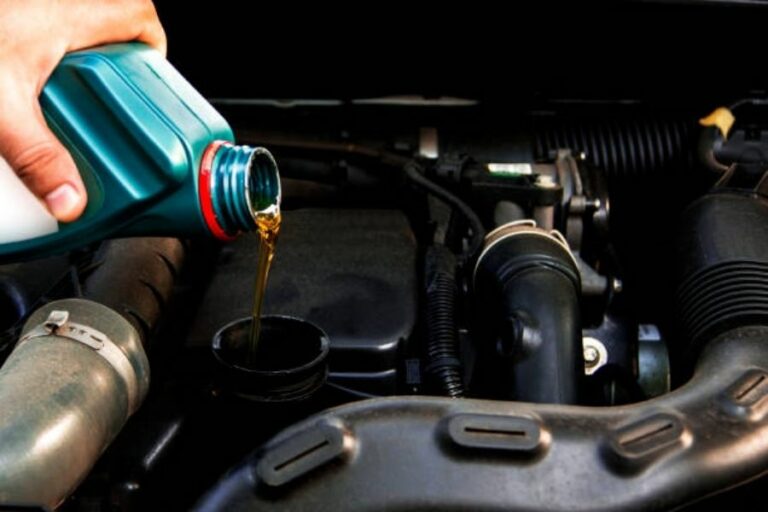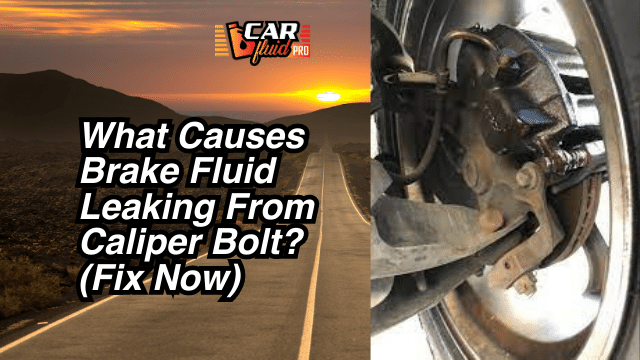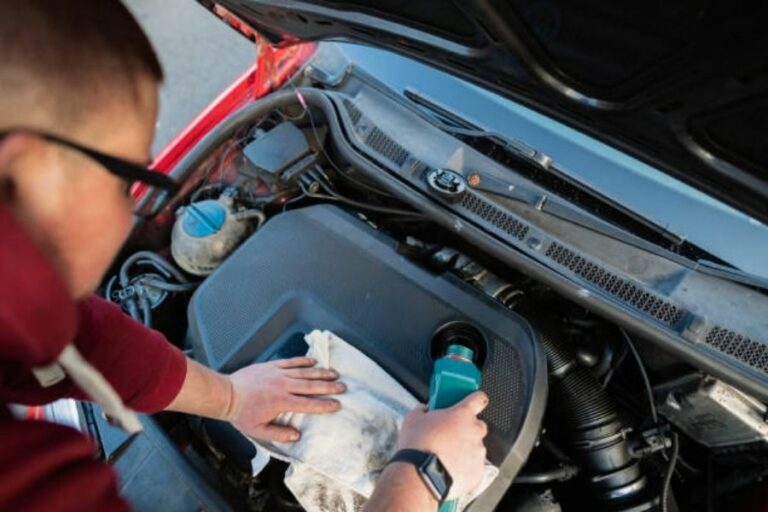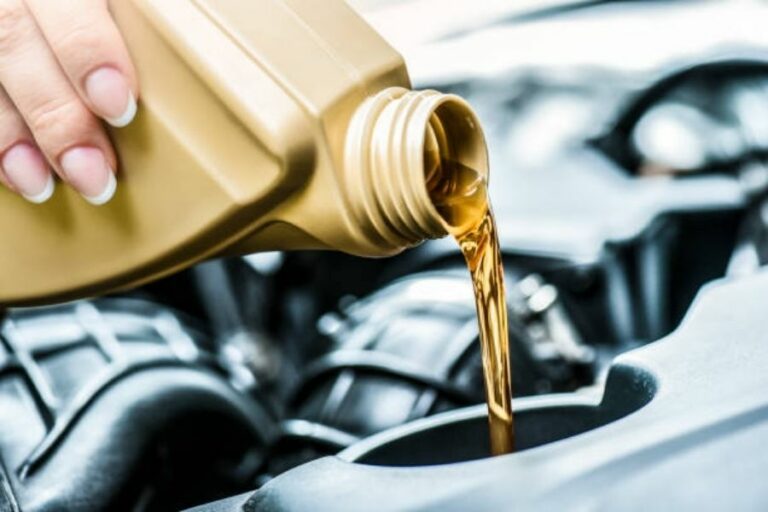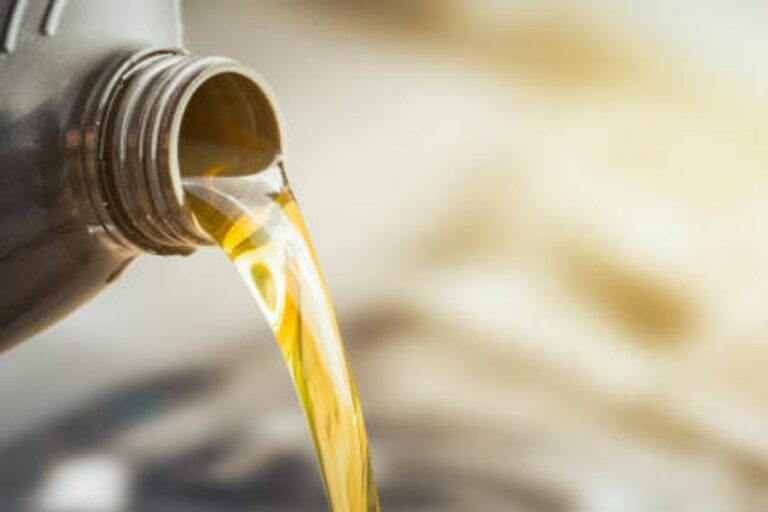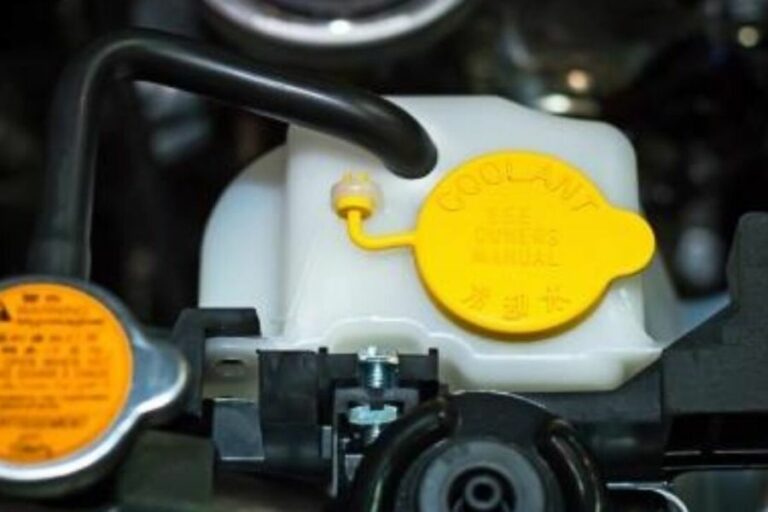Is It Normal to Have Bubbles on Oil Dipstick? [Disclosed]
As a car owner, you might be familiar with checking engine oil with an oil dipstick. There is nothing wrong with this practice. Do so regularly to know the condition of your engine oil. But have you ever felt surprised seeing bubbles on the oil dipstick?
Is it normal to have bubbles on an oil dipstick? You can accept the bubbles in the engine oil to some extent. But in most cases, noticing bubbles is often concerning for car owners, meaning there might be issues with the engine that need to be checked.
Today, we plan to share with you the causes, threats, and solutions to the irritating air bubbles on oil dipstick. Keep reading!
How Alarming Is It To Notice Bubbles on Oil Dipstick?
As stated, it is normal for car owners to come across bubbles in engine oil. However, there’s no floor to take this fact lightly. Rather, major engine oil bubbles might indicate a major engine malfunction.
Similarly, don’t be worried whenever you see air bubbles on oil dipstick. In some cases, it is OKAY to have bubbles on the oil, and it is quite acceptable, for example, during cold weather.
The bubbles can form and disappear after a few moments if there are no issues with the engine.
But what exactly are we trying to establish here? Whether you show concern about bubbles on the oil dipstick depends on what caused the issue.
And then, it will be crystal clear whether the bubbles on the oil dipstick are alarming. Based on that, you need to take the necessary measures or troubleshooting steps.
Read Also: Engine Oil Dipstick Hard to Read Analysis
What Causes Bubbles on the Engine Oil Dipstick?
Many reasons might let you discover the bubbles on the engine oil dipstick. Some of them are major and nothing to worry about. Additionally, some might invite headaches for car owners. Let’s find out.
1. Overfilled Sump
You should always put a certain level of engine oil on the sump of your car. But, knowingly or unknowingly, you may put excessive oil in the engine oil sump.
And unfortunately, this can cause the engine oil to turn out as bubbles on the dipstick.
When you overfill the engine oil, it can become a bit foamy due to excessive aeration by the cranks.
Additionally, there will be a lack of oil pressure and recirculation, which might cost engine damage in the long term.
Sometimes, the constant oil splash in the sump can cause engine oil bubbles on the oil dipstick. Additionally, make sure the engine oil level is not too low.
2. Leaking Head Gasket
Head gaskets, for any car, play a decent role in preventing the coolant from coming in contact with the engine oil. But what if there is leakage in the head gasket?
As you are thinking, the coolant won’t mind mixing with the engine oil, thus, causing the engine oil to form bubbles.
And when you insert the dipstick and pull it out from the tube, you will probably detect engine oil bubbles. This usually happens when there is antifreeze in the engine oil.
You’re supposed to find the oil sticky when you touch it with your finger. Additionally, if they look milky, it can indicate something wrong with the head gasket and an extreme chance of leakage.
3. Moisture in the Air
Sometimes, due to excessive moisture in the air, you might detect bubbles on the engine oil when you check it using a dipstick. This mostly happens when the engine can’t produce enough heat.
The moisture comes into play, and the engine oil becomes a bit freezy and ultimately turns out as bubbles or froth. Annoying, right?
4. Coolant Leakage
My words! This has always been a common issue that car owners can only understand.
Coolant leakage is simply not ignorable, as it often causes car issues. When you see bubbles in the engine oil, chances are there is a leakage in the coolant.
You are not allowed to allow coolant to mix with your engine oil. No way, never. Now ask me why.
When the coolant comes in contact with the engine oil due to leakage, it makes the engine oil less thick, and needless to say, there will be a lack of lubrication at the same time.
Many car owners have noticed bubbles on the oil dipstick when there is a coolant leakage, which may also cause severe issues for your vehicle.
5. Air Leakage in the Engine
Air leakage in your car’s engine might occur for many reasons. It might be a cranked vacuum hose, leaks, or cranks in your car’s intake manifold. No matter what causes the problem, air leakage can cause bubbles in your engine.
This happens when the air mixes with the oil and causes the oil to become aerated. And this, you see bubbles on the oil dipstick.
Read Also: Tip Of Oil Dipstick Broke Off
How to Fix Bubbles on Oil Dipstick?
Here, we will suggest what you should do to deal with the oil dipstick’s bubbles. You can’t deny the importance of checking the components that might cause major issues. Let’s see what you can do to fix the issue.
Solution 1: Check Whether the Oil Sump Is Overfilled and Drain Some Oil
We know you’re a smart car owner! But it can happen that you cross the level when it comes to putting in the right amount of engine oil. In such a case, check the oil sump to see whether it is overfilled with oil.
If you find the oil sump is overfilled, make sure you drain some engine oil. It won’t hurt your engine but rather become a cure to eliminate bubbles from the engine oil. But do you know how to drain engine oil? We have a video for you.
Solution 2: Check, and Then Repair/Replace the Leak Head Gasket
First, you need to locate the head gasket; for most cars, you’ll find the head gasket in the engine compartment. Once you locate the head gasket, the next thing you should do is check whether there is any additional leakage. If you don’t know your car, it’s better to go with the mechanic.
Nonetheless, you can check this video to check your car’s head gasket. If you find leakage, you should repair it by replacing the head gasket, depending on its condition.
Solution 3: Keep Your Engine Oil Without the Contact with Moisture
You can’t control moisture from the atmosphere, can you? But, it is possible to take effective prompts to deal with extreme moisture in your engine oil. The formula is simple; you just need to ensure the engine has enough heat in your car.
And here is where the experts suggest accelerating your car a few times before you start driving.
Solution 4: Check and Repair the Coolant Leakage
To stop the coolant flow from getting in touch with the engine oil, you just need to deal with the issue of coolant leakage. For this, you need to check the components that can cause the coolant to leak in your engine. Multiple components can malfunction and create coolant leakage.
In most cases, there is leakage on your car’s radiator cap. Additionally, chances are the water pump in your car becomes faulty.
So, you must carefully check these components and repair or replace them based on their conditions. Then again, we want you to go with professionals before replacing any key components.
Solution 5: Stop Air-Flow in the Engine
How can you stop air from flowing in your car? As you already know the possible reasons why the air can enter the engine, you need to work with the components which can cause air leakage.
First, whether the hose of the vacuum line is cranked or damaged, if it is cranked or damaged, you need to go with the new vacuum hose.
Additionally, there might be a break in the rubber tubes connected to your car’s intake manifold. So, similar to the vacuum hose, you need to check and replace the rubber rubes if you find additional leakage.
Never mind checking this video when it comes to checking the vacuum leakage in your car.
Read Also: Oil Filter Anti Drain Back Valve Failure Symptoms
Is it Bad To Have Bubbles On Oil Dipstick?
Yes, it is bad to have bubbles on oil dipstick. Bubbles can be a sign of several problems, including:
- Overfilled crankcase
- Air in the oil system
- Contaminated oil
Can There Be Bubbles On Dipstick After Oil Change?
Yes, there can be bubbles on the dipstick after an oil change. This is usually due to air being introduced into the oil system during the oil change process. The air can mix with the oil and create bubbles, which will show up on the dipstick.
Frequently Asked Questions
We often see how people react when they detect bubbles on oil dipstick. And for this, they often ask some potential questions online which need to be answered.
When should you hire a mechanic to deal with bubbles on the oil dipstick?
If you see bubbles on the oil dipstick and feel something is going wrong with your car’s engine, it is the best time to check your car via a mechanic. But, if there are no issues, there is no need to hire a mechanic.
How much does it cost to replace the head gasket of your car?
The replacement cost is often estimated to be between $1000 and $2000. We highly advise replacing the head gasket instead of repairing it because this may prevent the problem from recurring.
Can you drive your car with bubbles on the oil dipstick?
You can drive if your engine oil develops bubbles, but only when everything else is normal. If there are other engine issues, avoid driving. And this is the best thing you can do to deal with the issue.
How does the oil look when it form bubbles on the oil dipstick?
The bubbles on the oil dipstick will more likely look a bit browny. And, if the oil is contaminated, you’ll see a mixture of both brown and black. Often, the bubbles can also look like chocolate milk in color.

